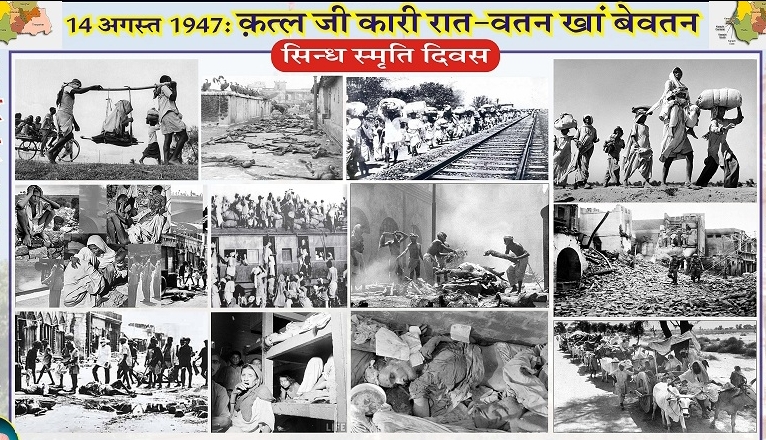Adipur
Shortly after the partition of Pakistan from India in 1947, a large group of refugees from Sindh in Pakistan, arrived in India. Adipur was established by the Indian government as a refugee camp. Its management was later transferred to an independent body called Sindhu Resettlement Corporation (SRC). The person who was introduced to the construction of the building was Bhai Pratap Dialdas, who asked for land from Mohandas Gandhi especially Sindhi immigrants from Pakistan. The 15,000-hectare (61 km2) land was donated by Maharaj of Kitch, His Highness Maharao Shri Vijayrajji Khengarji Jadeja at the request of Mohan Das Gandhi because it was felt that the climate and culture of Kitch was similar to Sindh’s. [9] Adipur, like Gandhidham, was built on a site dedicated to the rehabilitation of Sindhi Hindu refugees from Sindh. The Indian Institute of Sindhology established in Adipur, Gandhidham (Kutch), is a center for advanced studies and research in the fields of language, literature, arts and culture in Sindhi. [9]
Ahmedabad
The Ahmedabad population increased dramatically when many Hindu families and people of Sindhi descent arrived from Pakistan to flee to Ahmedabad. Kubernagar was founded by barracks (houses), which were provided to refugees arriving in Ahmedabad.
Gandhidham
The Maharaja of Kitch, His Highness Maharao Shri Vijayrajji Khengarji Jadeja, at the request of Mohandas Gandhi, donated 15,000 hectares (61 km2) of land to Bhai Pratap, the founder of Sindhu Resettlement Corporation to rehabilitate Hindu Sindhi exiles. [9] Sindhi Resettlement Corporation (SRC) was formed with Acharaya Kriplani as chairman and Bhai Pratap Dialdas as director. The main purpose of the organization was to assist in the reconstruction of the homeless by building a new town on a site a few kilometers from the country from the Government of India’s designated location in the new Kandla port in the Gulf of Kachchh. The first program was prepared by a team of editors led by Dr. O. H. Koenigsberger, director of housing for the Government of India. The program was also reviewed by Adams Howard and Greeley in 1952. The foundation stone of the city was laid with the blessings of Mohandas Gandhi, hence the city was named Gandhidham.
Ulhasnagar
Ulhasnagar, Maharashtra is a municipal city and the headquarters of Tehsil with the same name. It is a railway station on the Mumbai-Pune route of the Central Railway. Ulhasnagar, a Sindhi Hindu refugee colony, is 61 years old. Located about 35 miles [58 km] from Mumbai, the previously unproductive land has developed into a town in the Thane district, Maharashtra. Originally, known as the Kalyan (or Kalanan Camp) military camp, Ulhasnagar was largely established to accommodate 6,000 soldiers and 30,000 others during World War II. There were 2,126 barriers and about 1,173 employees. Most of the camps had large central halls with rooms attached to one side. The camp looked empty at the end of the war and served as a convenient and suitable place for the refugee refugees. Sindhi refugees, in particular, resumed their life in Ulhasnagar after the partition of India.
ICox Town, Bangalore
Cindy Hindus fleeing to Hyderabad moved to Bangalore via Mumbai and Goa. The community building community was established in Cox Town, with the temple, the Sindhi Association and the Sindhi Social Hall, a community center for celebrations, weddings and celebrations such as Holi and Gugu Nanak Jayanti. Public migration has led to the introduction of Sindhi culture and food in the city. [10]
Secunderabad, Hyderabad
Main title: Sindhi Colony, Secunderabad
Sindhi Colony is a suburb of Secunderabad, India. It was established to house the Sindhis refugee from Sindh, who became part of Pakistan after the Indian Party.

